When you aim for entry-level perfection, it's possible to leave a little on the table that might benefit slightly more experienced riders. So it is with Honda's sprightly and fun CB500F, our favorite of the CB500 lineup by a long shot.
But we knew we could make it better without throwing a ton of money at it, which is always a challenge when your base bike is so affordable. (We’re still waiting for official 2015 pricing on the CB500F, but the ’14 model was $5,799 for the base bike and $6,299 for the ABS model seen here.) The thrust was simple: Add a little bit of visual flair, improve the bike’s soft suspension, and give it a tad more character than it started with.
Style came from the R&G Tail Tidy, which cleaned up the CB’s somewhat awkwardly styled tail section. Practicality came from the Puig hugger and especially the Puig windscreen, which did far more to increase high-speed comfort than we expected. Indeed, this might be the one must-have mod for the CB500F.
On the suspension front, we installed a Race Tech Cartridge Emulator and a set of 0.85 kg/mm straight-rate springs. The Nitron NTR-R1 shock was ordered for a 180-pound rider and came with a 625 pound-inch (or 11.16 kg/mm) spring. We started the fork with 15-weight Maxima oil filled to 120mm below the fork caps (springs removed) and 10mm of spring preload after carefully cutting the fixed spacers.
As set up, the CB was a tad soft up front and stuff at the back, so we added 5mm of front preload (by adding spacers, but we’d cut a new set of spacers for a long-term solution) and took 1.5 turns of preload out of the shock, ending up with the shock spring at 142mm total length with the suspension fully extended. (Sadly, adjusting the preload collar is a royal pain, given the Honda’s close-in bodywork). We also set the emulators springs, which control the crossover point from orifice to valve damping, to one turn of preload to help reduce small-bump harshness.
We’re delighted with the Honda’s suspension now. It’s just firm enough for larger and more aggressive riders—and adds some needed cornering clearance—without being the least bit harsh. In an effort to increase the CB’s responsiveness, we experimented with new tires—Continental’s excellent ContiRoadAttack 2s—and a slightly narrower front size. The 110/70-17 roller did sharpen the CB’s steering but gave up a little too much stability over the stock 120/70, which would be our default choice having tried both. The Contis are grippy, break away predictably, and wear reasonably well.
In the end, we managed to really perk up the little Honda’s handling without making it any worse for new or lightweight riders. If anything, it’s more fun than before, which is impressive all by itself.










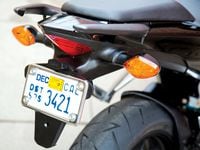
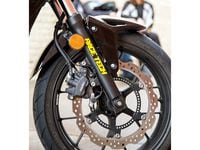

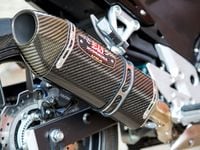

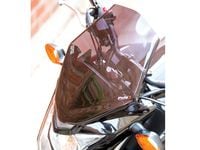
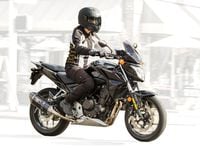
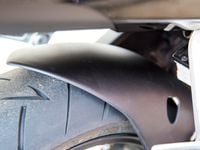
/cloudfront-us-east-1.images.arcpublishing.com/octane/MUQLOVLL2ZDGFH25ILABNBXKTI.jpg)
/cloudfront-us-east-1.images.arcpublishing.com/octane/TNOU5DNE2BC57MFPMGN2EIDXAM.jpg)
/cloudfront-us-east-1.images.arcpublishing.com/octane/GTCXACQGJ5HAPDTGWUQKDEH44E.jpg)
/cloudfront-us-east-1.images.arcpublishing.com/octane/S35YGSEMEZB4BLTDJTSZPF4GLA.jpg)
/cloudfront-us-east-1.images.arcpublishing.com/octane/5UOT6HPX2JFMRJAX6EH45AR4MQ.jpg)
/cloudfront-us-east-1.images.arcpublishing.com/octane/OKWOJWAKP5EP3OACCRRWPCIX2Q.jpg)
/cloudfront-us-east-1.images.arcpublishing.com/octane/2WF3SCE3NFBQXLDNJM7KMXA45E.jpg)
/cloudfront-us-east-1.images.arcpublishing.com/octane/G4MG6OUCJNBSHIS2MVVOTPX65E.jpg)
/cloudfront-us-east-1.images.arcpublishing.com/octane/IIGGWFOTOJGB7DB6DGBXCCMTDY.jpg)
/cloudfront-us-east-1.images.arcpublishing.com/octane/QSTCM6AVEZA5JJBUXNIQ3DSOF4.jpg)
/cloudfront-us-east-1.images.arcpublishing.com/octane/U4I7G625B5DMLF2DVIJDFZVV6M.jpg)
/cloudfront-us-east-1.images.arcpublishing.com/octane/B6XD6LS6IVCQPIU6HXDJSM3FHY.jpg)
/cloudfront-us-east-1.images.arcpublishing.com/octane/ICL63FEDDRDTTMINYICCEYGMDA.jpg)
/cloudfront-us-east-1.images.arcpublishing.com/octane/FCGZHQXRBZFLBAPC5SDIQLVF4I.jpg)
/cloudfront-us-east-1.images.arcpublishing.com/octane/WNOB6LDOIFFHJKPSVIWDYUGOPM.jpg)

/cloudfront-us-east-1.images.arcpublishing.com/octane/X33NU3E525ECRHXLNUJN2FTRKI.jpg)
/cloudfront-us-east-1.images.arcpublishing.com/octane/6KKT5NNL2JAVBOXMZYS5ZO76YA.jpg)
/cloudfront-us-east-1.images.arcpublishing.com/octane/J5RKG5O455GMPGQRF2OG6LRT7A.jpg)
/cloudfront-us-east-1.images.arcpublishing.com/octane/GX2CIZKQVRH2TATDM26KFG2DAE.jpg)
/cloudfront-us-east-1.images.arcpublishing.com/octane/ZWIDYSAKQZHD5BHREMQILXJCGM.jpg)
/cloudfront-us-east-1.images.arcpublishing.com/octane/CYUHJZCTSJCH3MRAQEIKXK7SCQ.jpg)
/cloudfront-us-east-1.images.arcpublishing.com/octane/LKOFINY56FCXJCANJ5M7ZDQUBY.jpg)
/cloudfront-us-east-1.images.arcpublishing.com/octane/4NBPDACMWJH63JQYJVK3QRBDZI.jpg)